Top Ten Foods to Try in Argentina
Questions This Article Answers
What are the top ten must-try foods in Argentina?
What is asado?
What are the names of the beef cuts in Spanish?
How do I say I want my meat medium rare in Spanish?
What is chimichurri?
What are the most common empanada fillings?
What is mate?
What is an alfajor?

Argentinian Cuisine
The food culture in Argentina is a reflection of the history of the country. Argentinian cuisine has been influenced by indigenous cuisine, Spanish cuisine during the colonial times, and cuisine brought by the immigrants at the beginning of the 20th century, especially Italian cuisine.
Argentinians typically have a light desayuno(breakfast) in the morning, almuerzo(lunch) around noon, a merienda(snack) around 5 p.m., and cena(dinner) around 9 p.m.
Let’s learn about the top ten foods you should try in Argentina!
Asado
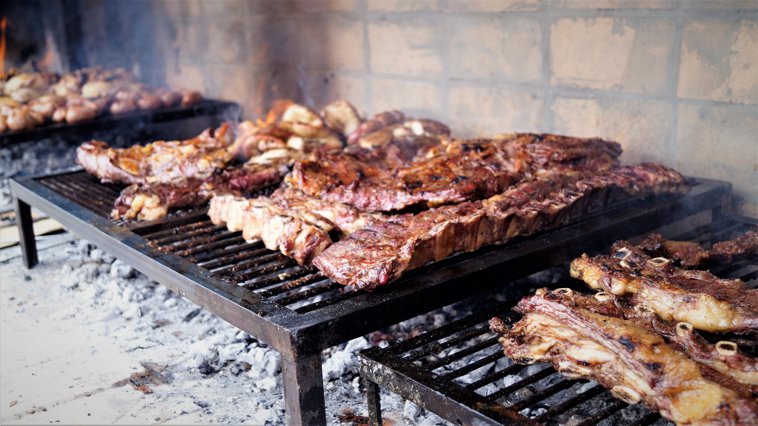
Carne(meat) is one of the first things that comes to mind when people think about food in Argentina. The vast plains of Argentina allow ranchers and gauchos(gauchos) to raise large numbers of vacas(cows) in wide, open fields where cattle can roam freely. Although you may also find chicken, fish, pork, or lamb, carne de vaca(beef), or simply carne, is the most common choice you'll find in an asado(barbecue).
Asado is the quintessential Argentinian food. The word asado, which can be literally translated as grilled, has different meanings. It is used to refer to the meat cooked on a parrilla(grill), one of the beef cuts that can be cooked on a grill, and the social event in which grilled meat is eaten.
Asado is usually served with ensalada(salad) or papas fritas(fries), and picada(appetizers) might come before the main food. If you’re a vino(wine) lover, you can pair your steak with a glass of Malbec(Malbec).
Beef Cuts
| examples |
|---|
Choripán
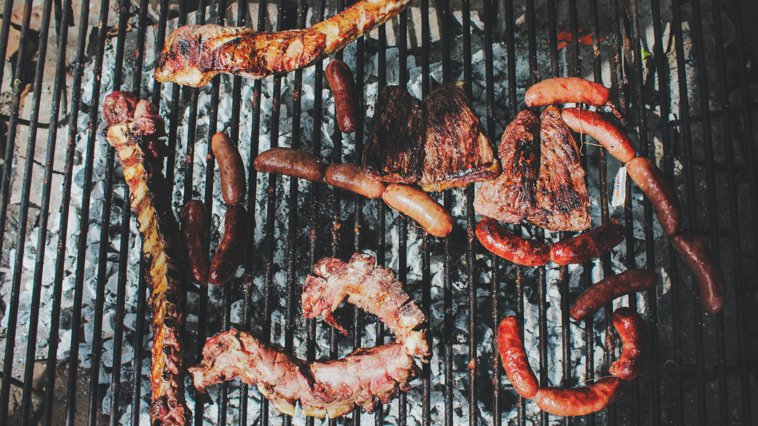
If you take a chorizo from the parrilla and put it in a pan(bread bun), you get a choripán(sausage sandwich), which is referred to colloquially as a chori. This sandwich is a staple of Argentinian street food and is usually sold at events, such as a partido(game) or a recital(concert), or it can be eaten during an asado before the main course. Don't forget to top it with chimichurri or salsa criolla!
| examples |
|---|
Empanadas
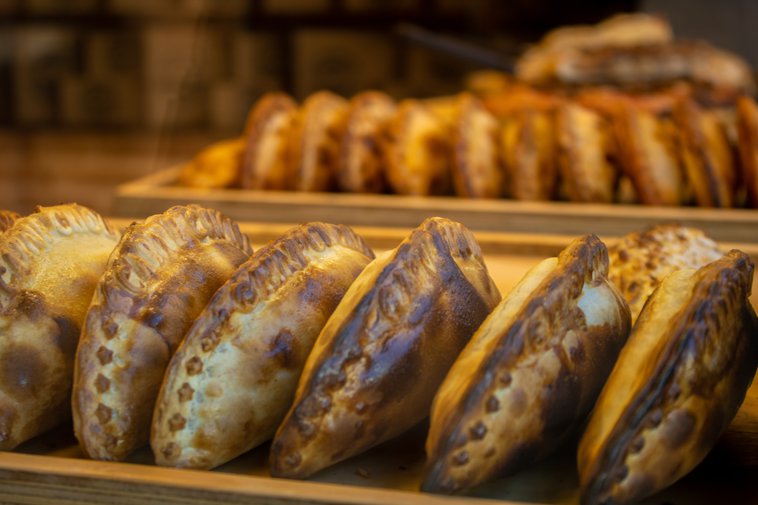 Another staple of Argentinian cuisine and a street food favorite are empanadas(empanadas). These individual savory filled pastries can be served as an appetizer, a side dish, or they can be the main course. The name comes from the verb empanar, which means to wrap in bread. Empanadas are versatile and can have all sorts of fillings.
Another staple of Argentinian cuisine and a street food favorite are empanadas(empanadas). These individual savory filled pastries can be served as an appetizer, a side dish, or they can be the main course. The name comes from the verb empanar, which means to wrap in bread. Empanadas are versatile and can have all sorts of fillings.
There are two types of empanadas: empanada frita (fried empanada) and empanada al horno (baked empanada). Let’s take a look at the most common rellenos(fillings):
- empanada de carne(beef)
- empanada de choclo(corn)
- empanada de espinaca y queso(spinach, cheese)
- empanada de jamón y queso(ham, cheese)
- empanada de pescado(fish)
- empanada de pollo(chicken)
- empanada de pollo al verdeo(chicken, green onion)
- empanada de queso y cebolla(cheese, onion)
- empanada salteña(beef, potato, egg, red pepper, green onion)
- empanada tucumana(beef, red pepper, garlic, cumin)
| examples |
|---|
Locro
Locro(locro) is a traditional Argentinian stew made using maíz blanco(white corn), porotos(beans), zapallo(pumpkin), carne, chorizo, panceta(bacon), cebolla de verdeo(spring onion), and ají molido. Locro is associated with the Andes(Andes) region and is considered one of Argentina's national dishes.
Although you can eat it at any time of the year, locro is traditionally served on May 25, the date that marks Argentina's Revolución de Mayo(May Revolution). This patriotic stew is also served on July 9, which is Argentina's Día de la Independencia(Independence Day).
Matambre
Matambre(matambre), also called matambre arrollado(matambre arrollado), consists of a thin slice of beef wrapped around a mix of vegetables, hard-boiled eggs, and herbs, which is later boiled, baked, or grilled.
The word matambre is a blend of the words matar(kill) and hambre(hunger). This traditional Argentinian rolled-up beef dish is usually cut into thin rodajas(slices) and served cold as an appetizer while you're waiting for the main course.
| examples |
|---|
Milanesa
Milanesas(breaded cutlets) are part of Argentinian everyday food. Brought by Italian immigrants, this dish became extremely popular and is a favorite of children and adults alike. Milanesas consist of thin slices of meat that are pounded, breaded, and fried.
Milanesas are usually served with papas fritas, ensalada, or puré(smashed potatoes). Although they're mostly made using meat, there are vegetarian versions of milanesas as well.
Let's look at some of the common types of milanesas:
- milanesa de berenjena(eggplant)
- milanesa de carne(beef)
- milanesa de pescado(fish)
- milanesa de pollo(chicken)
- milanesa de soja(soy)
Milanesas may also be eaten with toppings, for example:
- milanesa a caballo(milanesa with fried eggs on top)
- milanesa a la napolitana(milanesa with tomato sauce and cheese on top)
| examples |
|---|
Pizza
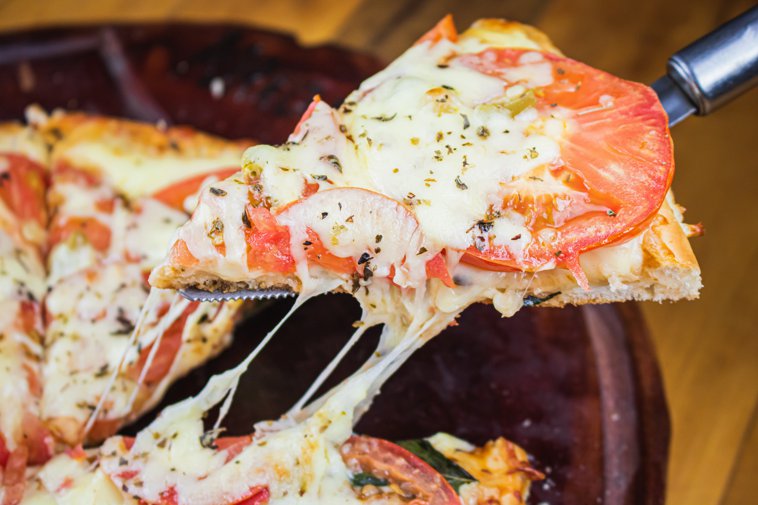
Italian pizza(pizza) also made its way to Argentina, but with a twist. Argentinian pizza is typically thicker, has less tomato sauce, and has more cheese. Many pizzerías(pizzerias) sell pizzas by the porción(slice), and you can eat them standing up at the counter. If you look around, you'll notice that some of the locals like to eat their pizza slices with a slice of fainá(chickpea-flour crepe) on top.
The most common pizza toppings are:
- anchoas(anchovies)
- cuatro quesos(four types of cheese)
- especial(ham, cheese, red pepper)
- fugazzeta(cheese, onion)
- jamón crudo y rúcula(Serrano ham, arugula)
- muzzarella(mozzarella cheese)
- napolitana(mozzarella cheese, basil)
- palmitos(heart of palm, salsa golf)
- panceta(bacon)
- pollo y huevo(chicken, egg)
- provolone(provolone cheese)
- roquefort(roquefort cheese)
Other popular Italian dishes are canelones(cannelloni), fideos(spaghetti), grisines(breadsticks), lasaña(lasagna), ñoquis(gnocchi), osobuco(osso buco), ravioles(ravioli), and many postres(desserts).
Mate
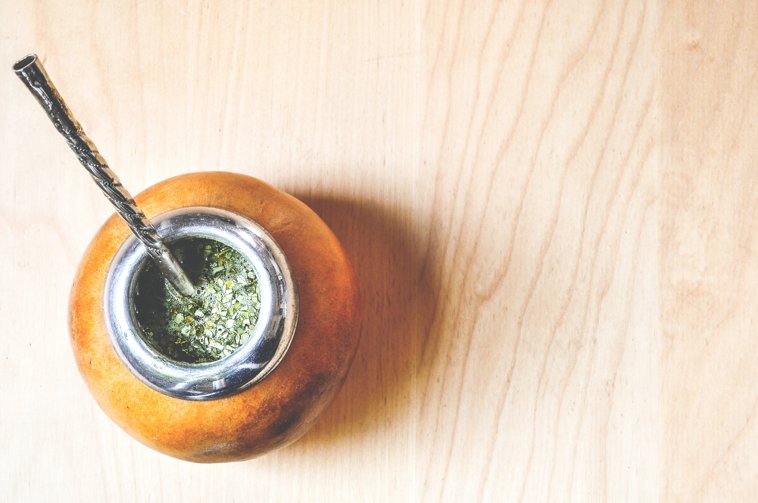
Mate(maté) is a traditional infusion popular in Argentina and other countries in Sudamérica(South America). It is made with the leaves of the yerba mate(yerba maté) plant. The yerba mate, or simply yerba, is poured into a gourd, which is filled with hot water and and then drunk using a bombilla(wooden or metal straw). Mate is drunk throughout the day and is popular for being an energy booster.
The word mate has different meanings. It can refer to the infusion as well as the container from which you drink it.
Drinking mate is also a social activity, hence its cultural significance. You'll regularly see groups of friends, family, classmates, and colleagues sharing mate and talking to each other. Drinking mate in a social setting comes with its rituals. When you're drinking mate, everybody drinks from the same gourd using the same straw. There's a designated cebador(brewer) who is responsible for pouring hot water into the gourd each time and passing it around. When you're handed the mate, drink it without moving the bombilla around, as it might clog its filter.
If the weather is too hot, some people may opt for a tereré(tereré), which is yerba with ice and water mixed with drink mix instead of hot water.
| examples |
|---|
Dulce de Leche

Dulce de leche(dulce de leche) is the Argentinian equivalent to Nutella. It is made by simmering azúcar(sugar) and leche(milk) until it condenses into a sweet, sticky golden-brown delicacy.
Dulce de leche can be found in alfajores(alfajores), tortas(cakes), panqueques(pancackes), churros(churros), facturas(pastries), served with flan(flan), as an helado(ice cream) flavor, or simply spread on bread.
| examples |
|---|
Alfajor
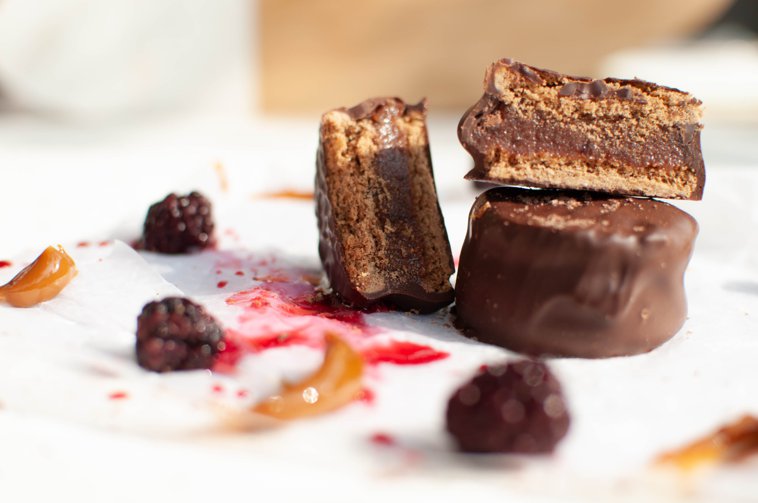
If your sweet tooth is calling, you should definitely eat an alfajor(alfajor). This round cookie sandwiched with sweet filling, usually dulce de leche or mousse de chocolate(chocolate mousse), can be found in virtually every kiosko(kiosk) and supermarket in Argentina. Alfajores were created in the Arab world and were brought to the Americas by the Spaniards.
Alfajores come in every shape and size, and you can usually find the following flavors:
- alfajor de chocolate(covered in chocolate and filled with dulce de leche)
- alfajor de chocolate blanco(covered in white chocolate and filled with dulce de leche)
- alfajor de fruta(glazed and filled with jam)
- alfajor de maicena(made of cornstarch, filled with dulce de leche, and rolled in coconut flakes)
| examples |
|---|
Hungry for more? Check out these food-related articles!














